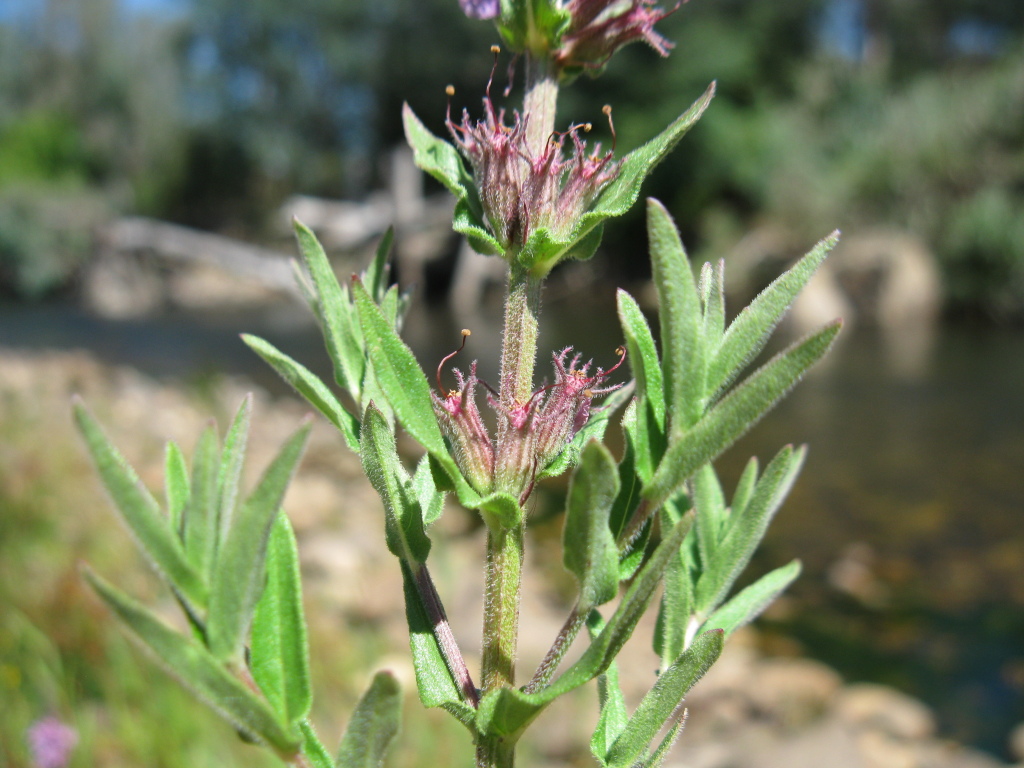Lythrum salicaria
L. Purple LoosestrifeErect herb, annual above ground, perennial below, 50–150 cm tall, glabrous or pubescent; stems angular. Leaves mostly opposite, sometimes in whorls of 3, narrowly ovate to oblong-lanceolate, 1.5–7 cm long, 3–15 mm wide, sessile; apex acute; base rounded to auriculate or stem-clasping. Flowers in clusters of 3–5 in upper leaf-axils forming spike-like panicles, subsessile; hypanthium cylindric, 4.5–5 mm long, 1.5–2 mm diam., appendages 5 or 6, subulate, 2–3 mm long; sepals 5 or 6, triangular, c. 1 mm long; petals 5 or 6, spreading, ovate, 8–10 mm long, pink, blue or purple; stamens usually 12, usually dimorphic, 6 long-exserted. Capsule ovoid, shorter than hypanthium, dehiscing by 2 valves. Flowers mainly Sep.–Apr.
MuM, GleP, VVP, VRiv, MuF, GipP, OtP, WaP, Gold, CVU, GGr, DunT, NIS, EGL, EGU, WPro, HSF, HNF, Strz, MonT, VAlp. Also SA, Qld, NSW, ACT, Tas. Cosmopolitan. Apart from the north and north-west, widespread across much of Victoria, usually in wet and swampy places.
Jeanes, J.A. (1996). Lythraceae. In: Walsh, N.G.; Entwisle, T.J., Flora of Victoria Vol. 3, Dicotyledons Winteraceae to Myrtaceae, pp. 909–911. Inkata Press, Melbourne.
 Spinning
Spinning



